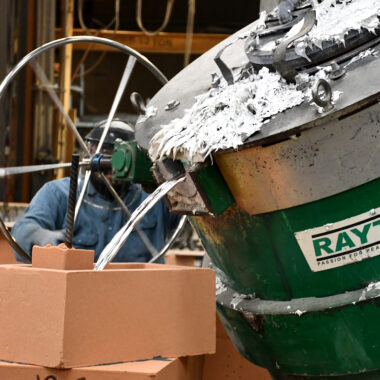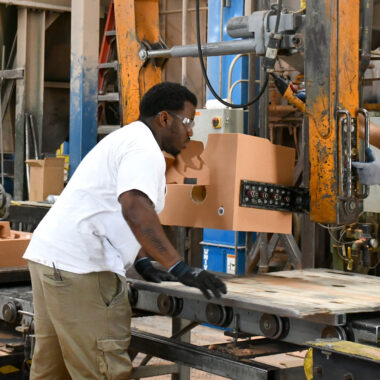Discovering the Craft: All About Aluminum Casting Techniques
Discovering the Craft: All About Aluminum Casting Techniques
Blog Article
Discover the World of Aluminum Casting: Insider Strategies and tricks
In the world of production, light weight aluminum casting stands as a crucial process, vital for the development of a vast selection of items. As we browse with the globe of light weight aluminum casting, there exists a world of expert secrets and approaches that can raise the quality of the final products and improve the manufacturing process.

The Basics of Light Weight Aluminum Casting
Aluminum spreading, an essential process in production, includes the putting of liquified light weight aluminum into a mold and mildew to achieve desired forms and frameworks. This functional method is widely used throughout various sectors due to aluminum's exceptional buildings such as high strength-to-weight ratio, rust resistance, and thermal conductivity.
The procedure starts with the melting of aluminum in a furnace at temperature levels exceeding 1220 ° F(660 ° C ) As soon as the light weight aluminum reaches its liquid state, it is poured into a pre-designed mold dental caries. The mold, typically made from materials like steel or sand, establishes the final form of the actors light weight aluminum component.
After pouring, the light weight aluminum is left to solidify and cool down within the mold and mildew - about aluminum casting. This cooling period is crucial as it establishes the integrity and top quality of the last item. When strengthened, the mold is removed, disclosing the freshly created light weight aluminum spreading
Expert Tips for Successful Casting
To achieve ideal results in aluminum casting, thorough attention to information during the mold and mildew layout stage is important for ensuring effective results. Tracking and regulating the metal temperature level throughout the casting process can aid stop issues such as early solidification or porosity in the final item.
In addition, an additional key tip is to appropriately prepare the mold surface. A well-prepared mold and mildew surface area can contribute to much better metal circulation, reduced turbulence, and boosted surface coating on the actors component. This preparation may entail making use of layers or therapies to enhance mold and mildew release and avoid metal/mold interactions that might cause problems. By paying attention to these expert ideas, suppliers can improve the top quality and effectiveness of their light weight aluminum casting processes.
Advanced Methods in Light Weight Aluminum Casting
Making use of innovative methods and innovative techniques, the realm of light weight aluminum casting has actually seen a significant development towards progressed techniques that push the boundaries of conventional techniques. One such strategy is vacuum cleaner casting, which involves producing a vacuum environment to eliminate air from the mold cavity, leading to better and even more elaborate castings with lowered porosity. Additionally, financial investment casting, likewise called lost-wax casting, is a polished technique that permits slim walls and complicated forms, leading to detailed and accurate light weight aluminum components.

In addition, advanced simulation software application plays a crucial function in enhancing spreading designs and forecasting potential defects, allowing for modifications to be made before the actual spreading procedure begins. By accepting these sophisticated methods, producers can boost their light weight aluminum casting abilities to brand-new heights, satisfying the demands of modern markets with accuracy and innovation.
Understanding Different Casting Approaches
Different spreading approaches offer special advantages and are selected based on factors such as the complexity of the design, production volume, product needs, and price considerations. One of the most usual casting approaches is sand casting, where a mold is produced making use of sand as the primary product.
One more popular spreading technique is pass away casting, which includes injecting liquified steel right into a mold tooth cavity under high pressure. Die casting is understood for its high accuracy, smooth surface coating, and the capability to produce complex forms with limited tolerances. Gravity spreading, on the other hand, relies upon gravity to fill up the mold and mildew tooth cavity with liquified metal. This method appropriates for generating easier shapes and is affordable for little to medium manufacturing runs. By comprehending the nuances of various casting approaches, suppliers can make informed choices to enhance their production procedures and attain the wanted outcomes.
Maximizing Performance in Casting Procedures
With a strong grip of the nuances of different spreading approaches, makers can simplify their procedures to improve efficiency in steel manufacture procedures. Making the most of effectiveness in casting procedures requires a systematic Related Site method that concentrates on enhancing every action of the casting process.
Moreover, buying innovative modern technology and tools can considerably improve effectiveness in casting operations. Automated systems, robotics, and computer-aided design (CAD) software can enhance processes, minimize mistakes, and rise output. Additionally, training workers on the most recent techniques and best practices can likewise contribute to optimizing efficiency in casting procedures.
Routine maintenance of tools and devices is crucial to lessen and prevent break downs downtime - about aluminum casting. Carrying out an aggressive maintenance routine can help determine potential concerns prior to they intensify, making certain smooth operations and nonstop production. On the whole, by prioritizing performance and constant renovation, manufacturers can enhance their spreading operations and remain competitive in the market

Verdict
In verdict, the world of light weight aluminum spreading supplies a large range of possibilities for those looking to develop detailed and sturdy metal items. Understanding the numerous casting approaches and enhancing efficiency in procedures are vital elements to achieving high-quality outcomes in aluminum casting.
One such strategy is vacuum cleaner casting, which includes creating a vacuum setting to remove air from the mold and mildew dental caries, leading to greater top quality and more complex castings with reduced porosity (about aluminum casting). Additionally, investment casting, likewise understood as lost-wax casting, check here is a refined approach that permits for slim walls and complicated forms, resulting in precise and comprehensive light weight aluminum components
One of click this link the most typical casting approaches is sand spreading, where a mold and mildew is developed using sand as the primary product.One more preferred spreading technique is pass away spreading, which includes infusing molten metal into a mold tooth cavity under high pressure. Comprehending the numerous spreading approaches and enhancing performance in operations are key components to attaining high-quality outcomes in light weight aluminum casting.
Report this page